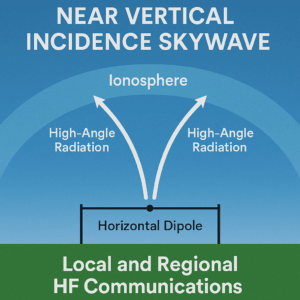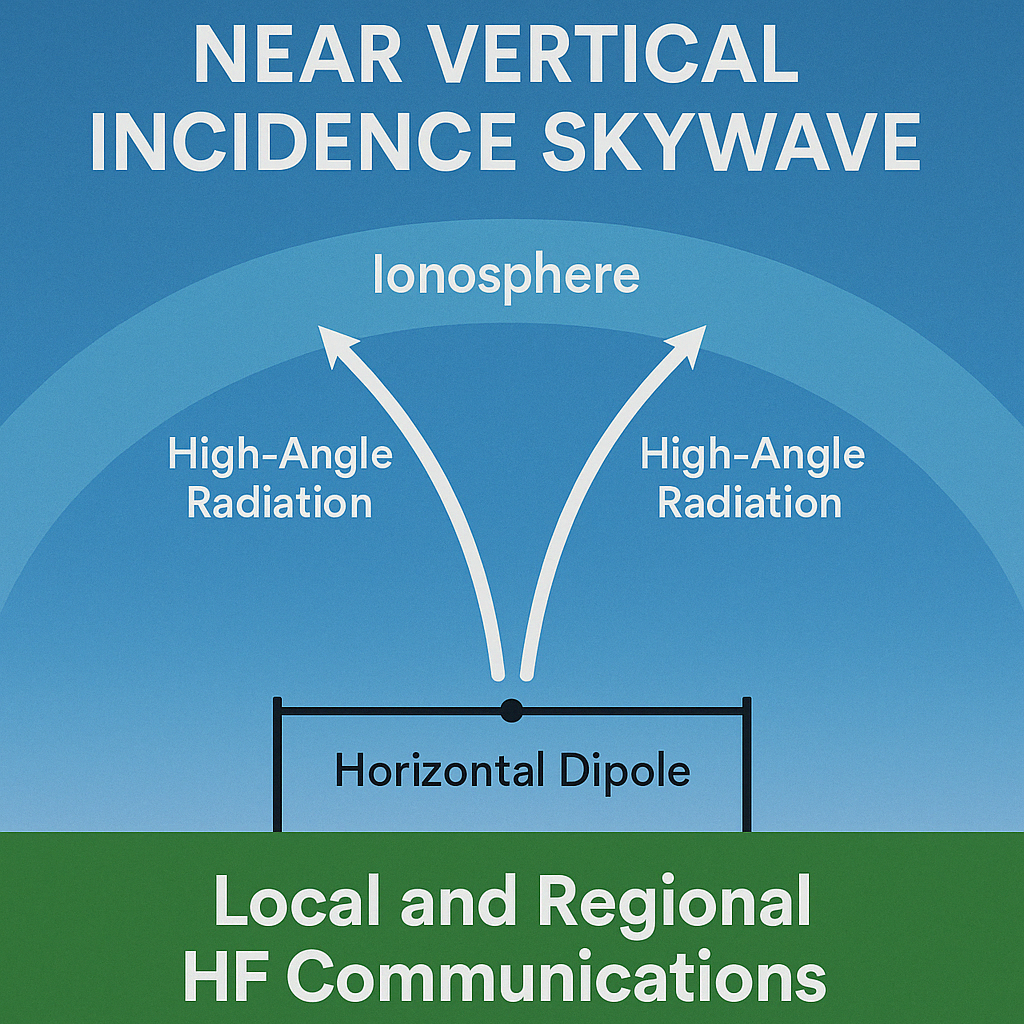
One of the most underappreciated tools in the amateur radio toolbox is NVIS propagation, short for Near Vertical Incidence Skywave. It’s a method that enables HF communication over short to medium distances—perfect for regional communication when repeaters are down or VHF coverage is spotty.
So, what makes NVIS different? Let’s dig in.
What is NVIS?
NVIS uses HF frequencies (typically 1.8 MHz to 10 MHz, but most effectively from 3.5 to 7 MHz) and high-angle radiation to send signals almost straight up. Those signals then reflect off the ionosphere and come back down nearly vertically, covering a wide area in a 200 to 400 mile radius—ideal for local emergency nets or club-to-club communications across nearby towns and counties.
Unlike typical long-distance HF contacts that use low-angle radiation for DX, NVIS fills in the “skip zone” where groundwave coverage fades but the ionosphere reflects signals too far away to help.
When to Use NVIS
NVIS is especially useful:
-
During emergencies when regional coordination is critical
-
When VHF/UHF repeaters are unavailable
-
For daily HF nets that involve nearby operators
-
In rural or hilly terrain where line-of-sight VHF is limited
If you’re part of ARES or Skywarn, NVIS should absolutely be in your toolbox.
How to Make NVIS Work
1. Frequency Choice
Lower HF bands work best. Here’s a rough guide:
-
160m (1.8 MHz) – Best at night
-
80m (3.5 MHz) – Excellent for night and early morning
-
40m (7 MHz) – Often good during the day with favorable conditions
Check the critical frequency (foF2) to see if the ionosphere supports NVIS at your chosen frequency.
2. Antenna Setup
The key to NVIS is low height. Forget the old “higher is better” rule—here, lower is the trick:
-
A horizontal dipole at 1/10 to 1/4 wavelength high (10–20 feet for 80 meters) is ideal
-
Inverted V and broadband wire antennas also work well if placed low
Adding a reflective ground screen or metallic surface under your antenna can boost upward radiation.
3. Power and Mode
-
NVIS works with 100 watts or less—you don’t need QRO
-
Modes like SSB, CW, and increasingly digital (e.g. Winlink, JS8Call) perform well
-
Don’t forget AM if you’re working with military surplus rigs—NVIS is popular in MARS and SHARES nets
Real-World NVIS in Action
During regional disasters—think ice storms, hurricanes, or widespread power outages—NVIS has proven invaluable for keeping emergency ops connected when everything else is down.
Some clubs even host NVIS Field Days to experiment with antenna setups, test coverage, and train in local HF communications.
Try It Yourself!
NVIS is easy to test. Next time you’re on 80 or 40 meters, string up a dipole 10-15 feet off the ground, spin the dial, and call CQ. Ask others in your region to check in and report signal quality. You might be surprised at the solid, reliable coverage you get.
Final Thoughts
As amateur radio operators, we have a responsibility to be ready for anything. NVIS gives us the power to reach across the region without relying on infrastructure or long-distance propagation. Whether it’s a club net, an ARES exercise, or a disaster scenario—NVIS is a game-changer.
Have you used NVIS successfully or built a killer low dipole? Share your experiences at the next Kilowatt Club meeting or post them in our members-only forum!
Stay safe, stay connected, and keep experimenting.
73,
NØYH
Kilowatt Amateur Radio Club


